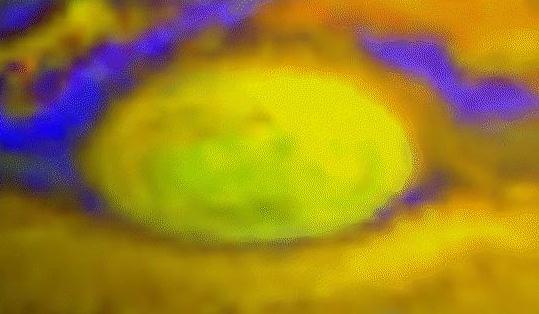Explanation: What happened to Jupiter's Great Red Spot? Operating at a chilly 55 degrees Kelvin, the Galileo Spacecraft's Near Infrared Mapping Spectrometer (NIMS) recorded this composite image of Jupiter's Great Red Spot in late June 1996. Red, green, and blue colors were chosen to represent three different infrared wavelengths detected by the NIMS instrument. The resulting yellowish green appearance of the massive Jovian storm system - a cold, high pressure area 2 to 3 Earth diameters wide - indicates that it lies high above the surrounding cloud features. Blue corresponds to regions where the clouds are relatively thin and the features lie at greater depths.
1999 2000 2001 2002 2003 2004 2005 2006 2007 2008 2009 2010 2011 2012 2013 2014 2015 2016 2017 2018 2019 2020 2021 2022 2023 2024 2025 |
Yanvar' Fevral' Mart Aprel' Mai Iyun' Iyul' Avgust Sentyabr' Oktyabr' Noyabr' Dekabr' |
NASA Web Site Statements, Warnings, and Disclaimers
NASA Official: Jay Norris. Specific rights apply.
A service of: LHEA at NASA / GSFC
& Michigan Tech. U.
|
Publikacii s klyuchevymi slovami:
Jupiter - Bol'shoe Krasnoe Pyatno - uragan - infrakrasnoe izluchenie - Yupiter
Publikacii so slovami: Jupiter - Bol'shoe Krasnoe Pyatno - uragan - infrakrasnoe izluchenie - Yupiter | |
Sm. takzhe:
Vse publikacii na tu zhe temu >> | |
